Characteristics and themes
| | This section is empty. You can help by adding to it. (August 2020) |
| Part of the Harlem Renaissance in the Roaring Twenties | |
| Date | July 19, 1919 to 1926 (approx.) |
|---|---|
| Location | Washington, D.C., United States and influences from Harlem, New York and Paris, France |
| Also known as | Harlem Renaissance in D.C. |
| Participants | Various artists and social critics |
| Outcome | Mainstream recognition of cultural developments and idea of New Negro |
The Black Renaissance in D.C. was a social, intellectual, and cultural movement in Washington, D.C. that began in 1919 and continued into the late 1920s. [1] [2]
Before the start of the Harlem Renaissance, Washington, D.C. developed an educated and prosperous Black middle class, made up of Black intellectuals and scholars who often studied at Howard University. Washington, D.C. had the country's largest Black community from 1900 to 1920, heavily influencing the development of the Black Renaissance in the area. [3]
While the Black Renaissance movement ultimately began in Harlem, Manhattan, New York, with the Harlem Renaissance, the movement ultimately spread to cities across the United States. In Washington, D.C., the movement began on July 19, 1919, with the alleged sexual assault of a white woman by a black predator. The event was never confirmed, but it incited inflammatory responses from the four daily newspapers in the city. Several hundred whites formed a mob near Murder Bay off of Pennsylvania Avenue, a neighborhood known for prostitution and violence. The mob went on to assault a Black couple who were walking on 9th and D Streets, Southwest. [2] Many prominent figures in the Harlem movement had strong roots in Washington, D.C. and heavily influenced the movement there. [4]
U Street and Shaw was known as a place of entertainment and jazz music during this era. [5] As a result of its cultural importance, U street was often referred to as "Black Broadway". [6]
| | This section is empty. You can help by adding to it. (August 2020) |

The Cotton Club was a New York City nightclub from 1923 to 1940. It was located on 142nd Street and Lenox Avenue (1923–1936), then briefly in the midtown Theater District (1936–1940). The club operated during the United States' era of Prohibition and Jim Crow era racial segregation. Black people initially could not patronize the Cotton Club, but the venue featured many of the most popular black entertainers of the era, including musicians Fletcher Henderson, Duke Ellington, Jimmie Lunceford, Chick Webb, Louis Armstrong, Count Basie, Fats Waller, Willie Bryant; vocalists Adelaide Hall, Ethel Waters, Cab Calloway, Bessie Smith, Aida Ward, Avon Long, the Dandridge Sisters, the Will Vodery Choir, The Mills Brothers, Nina Mae McKinney, Billie Holiday, Midge Williams, Lena Horne, and dancers such as Katherine Dunham, Bill Robinson, The Nicholas Brothers, Charles 'Honi' Coles, Leonard Reed, Stepin Fetchit, the Berry Brothers, The Four Step Brothers, Jeni Le Gon and Earl Snakehips Tucker.

Countee Cullen was an American poet, novelist, children's writer, and playwright, particularly well known during the Harlem Renaissance.

Jessie Redmon Fauset was an African-American editor, poet, essayist, novelist, and educator. Her literary work helped sculpt African-American literature in the 1920s as she focused on portraying a true image of African-American life and history. Her black fictional characters were working professionals which was an inconceivable concept to American society during this time Her story lines related to themes of racial discrimination, "passing", and feminism.

Shaw is a central neighborhood in the Northwest quadrant of Washington, D.C. Shaw and the U Street Corridor historically have been the city's black social, cultural, and economic hub, witness to Martin Luther King Jr., Malcolm X, and numerous riots, marches, and protests that fought to achieve racial equality in Shaw and the entirety of America. The District of Columbia has designated much of Shaw as the Shaw Historic District, and Shaw also contains the smaller Blagden Alley-Naylor Court Historic District, listed on the National Register.

The Niggerati was the name used, with deliberate irony, by Wallace Thurman for the group of young African-American artists and intellectuals of the Harlem Renaissance. "Niggerati" is a portmanteau of "nigger" and "literati". The rooming house where he lived, and where that group often met, was similarly christened Niggerati Manor. The group included Zora Neale Hurston, Langston Hughes, and several of the people behind Thurman's journal FIRE!!, such as Richard Bruce Nugent, Jonathan Davis, Gwendolyn Bennett, and Aaron Douglas.
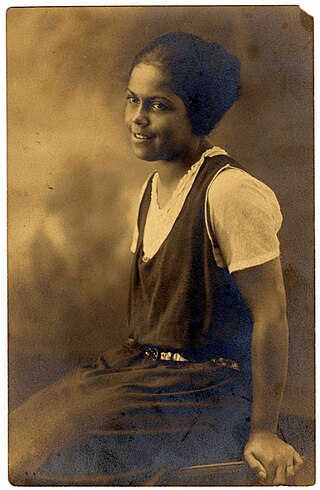
Gwendolyn B. Bennett was an American artist, writer, and journalist who contributed to Opportunity: A Journal of Negro Life, which chronicled cultural advancements during the Harlem Renaissance. Though often overlooked, she herself made considerable accomplishments in art, poetry, and prose. She is perhaps best known for her short story "Wedding Day", which was published in the magazine Fire!! and explores how gender, race, and class dynamics shape an interracial relationship. Bennett was a dedicated and self-preserving woman, respectfully known for being a strong influencer of African-American women rights during the Harlem Renaissance. Throughout her dedication and perseverance, Bennett raised the bar when it came to women's literature and education. One of her contributions to the Harlem Renaissance was her literary acclaimed short novel Poets Evening; it helped the understanding within the African-American communities, resulting in many African Americans coming to terms with identifying and accepting themselves.
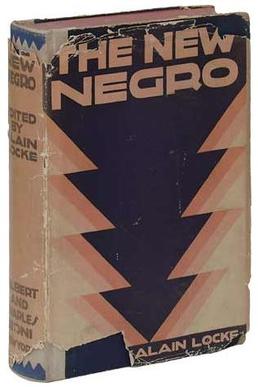
The New Negro: An Interpretation (1925) is an anthology of fiction, poetry, and essays on African and African-American art and literature edited by Alain Locke, who lived in Washington, DC, and taught at Howard University during the Harlem Renaissance. As a collection of the creative efforts coming out of the burgeoning New Negro Movement or Harlem Renaissance, the book is considered by literary scholars and critics to be the definitive text of the movement. "The Negro Renaissance" included Locke's title essay "The New Negro", as well as nonfiction essays, poetry, and fiction by writers including Countee Cullen, Langston Hughes, Zora Neale Hurston, Claude McKay, Jean Toomer, and Eric Walrond.

Wallace Henry Thurman was an American novelist and screenwriter active during the Harlem Renaissance. He also wrote essays, worked as an editor, and was a publisher of short-lived newspapers and literary journals. He is best known for his novel The Blacker the Berry: A Novel of Negro Life (1929), which explores discrimination within the black community based on skin color, with lighter skin being more highly valued.

Richard Bruce Nugent, aka Richard Bruce and Bruce Nugent, was a gay writer and painter in the Harlem Renaissance. Despite being a part of a group of many gay Harlem artists, Nugent was among only a few who were publicly out. Recognized initially for the few short stories and paintings that were published, Nugent had a long productive career bringing to light the creative process of gay and black culture.
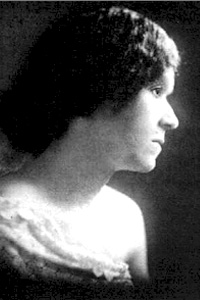
Georgia Blanche Douglas Camp Johnson, better known as Georgia Douglas Johnson, was a poet. She was one of the earliest female African-American playwrights, and an important figure of the Harlem Renaissance.

"New Negro" is a term popularized during the Harlem Renaissance implying a more outspoken advocacy of dignity and a refusal to submit quietly to the practices and laws of Jim Crow racial segregation. The term "New Negro" was made popular by Alain LeRoy Locke in his anthology The New Negro.
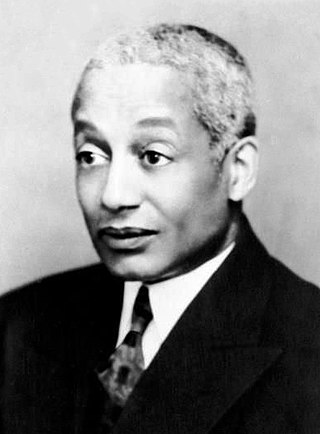
Alain LeRoy Locke was an American writer, philosopher, educator, and patron of the arts. Distinguished in 1907 as the first African-American Rhodes Scholar, Locke became known as the philosophical architect —the acknowledged "Dean"— of the Harlem Renaissance. He is frequently included in listings of influential African Americans. On March 19, 1968, the Rev. Dr. Martin Luther King Jr. proclaimed: "We're going to let our children know that the only philosophers that lived were not Plato and Aristotle, but W. E. B. Du Bois and Alain Locke came through the universe."

The Harlem Renaissance was an intellectual and cultural revival of African American music, dance, art, fashion, literature, theater, politics and scholarship centered in Harlem, Manhattan, New York City, spanning the 1920s and 1930s. At the time, it was known as the "New Negro Movement", named after The New Negro, a 1925 anthology edited by Alain Locke. The movement also included the new African American cultural expressions across the urban areas in the Northeast and Midwest United States affected by a renewed militancy in the general struggle for civil rights, combined with the Great Migration of African American workers fleeing the racist conditions of the Jim Crow Deep South, as Harlem was the final destination of the largest number of those who migrated north.
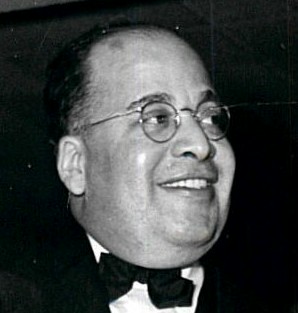
John Preston Davis was an American journalist, lawyer and activist intellectual, who became prominent for his work with the Joint Committee on National Recovery (JCNR). In 1935, he co-founded the National Negro Congress, an organization dedicated to the advancement of African Americans during the Great Depression.
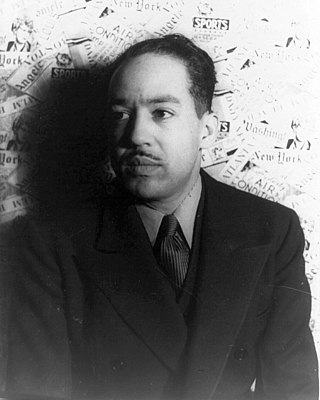
James Mercer Langston Hughes was an American poet, social activist, novelist, playwright, and columnist from Joplin, Missouri. One of the earliest innovators of the literary art form called jazz poetry, Hughes is best known as a leader of the Harlem Renaissance. He famously wrote about the period that "the Negro was in vogue", which was later paraphrased as "when Harlem was in vogue."
Lewis Grandison Alexander was an American poet, actor, playwright, and costume designer who lived in Washington, D.C. and had strong ties to the Harlem Renaissance period in New York. Alexander focused most of his time and creativity on poetry, and it is for this that he is best known.
James Latimer Allen (1907–1977) was a photographer and portraitist known for his images of the Harlem Renaissance of the 1920s and 1930s.
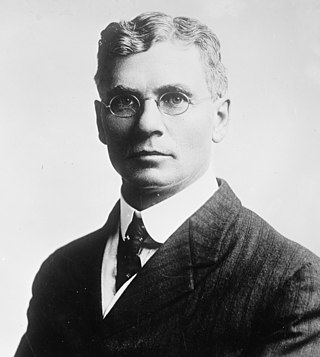
Arthur Paul Davis was an influential, African-American university professor, literary scholar, and the writer and editor of several important critical texts such as The Negro Caravan, The New Cavalcade, and From the Dark Tower: Afro-American Writers 1900–1960. Influenced by the Harlem Renaissance, Davis has inspired many African-Americans to pursue literature and the arts.
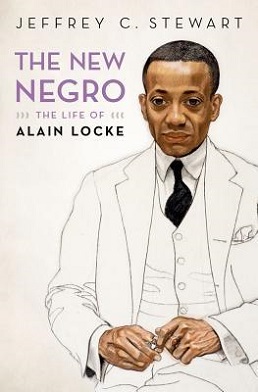
The New Negro: The Life of Alain Locke is a 2018 biography of Alain LeRoy Locke written by historian Jeffrey C. Stewart. The biography examines the life of Locke, an African-American activist and scholar who mentored many African-American intellectuals and writers and whom many see as the "father" of the Harlem Renaissance. Published by Oxford University Press, The New Negro won the 2018 National Book Award for Nonfiction and the 2019 Pulitzer Prize for Biography.